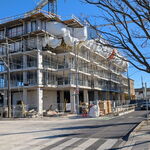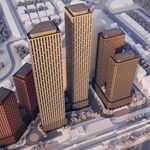crs1026
Superstar
^For the distances involved, (2.2 miles from the CP line to Lawrence, 1.2 miles from Lawrence to Kennedy) I'm not sure there is much value in adding tracks. Those minimum block lengths even with moving blocks mean that a GO train being overtaken would experience a lot of dwell during the overtake. That's especially problemmatic for westbound VIA trains, as the variability of arrival time after a 250-mile trip from Ottawa will not mesh with GO trains on headways of even 15 minutes. The best I would assume is a first-come, first-served approach to the southward direction. If I were to add a track, it would be to extend the VIA connecting track to a point south of Lawrence which would give some room for contingency.
To @Allandale25's point, I have always assumed that behind the scenes ML would eventually ask VIA to pony up capital dollars for improvements, on the same premise as CN expects VIA to do so - shared long term use of the asset. VIA can't expect that it would get free use of the asset, and the asset has to be enhanced to meet both interests.
I'm not so sure that Mr Verster deserves much credit for being "commercially astute" when the change comes so quickly after triggering a TPAP and design for the Scarborough Jct tunnel. This new planmay be a cleverer idea, but it seems to be a snap decision - just as the planning of the tunnel was a snap decision after years of ignoring the need for it.
- Paul
To @Allandale25's point, I have always assumed that behind the scenes ML would eventually ask VIA to pony up capital dollars for improvements, on the same premise as CN expects VIA to do so - shared long term use of the asset. VIA can't expect that it would get free use of the asset, and the asset has to be enhanced to meet both interests.
I'm not so sure that Mr Verster deserves much credit for being "commercially astute" when the change comes so quickly after triggering a TPAP and design for the Scarborough Jct tunnel. This new planmay be a cleverer idea, but it seems to be a snap decision - just as the planning of the tunnel was a snap decision after years of ignoring the need for it.
- Paul




